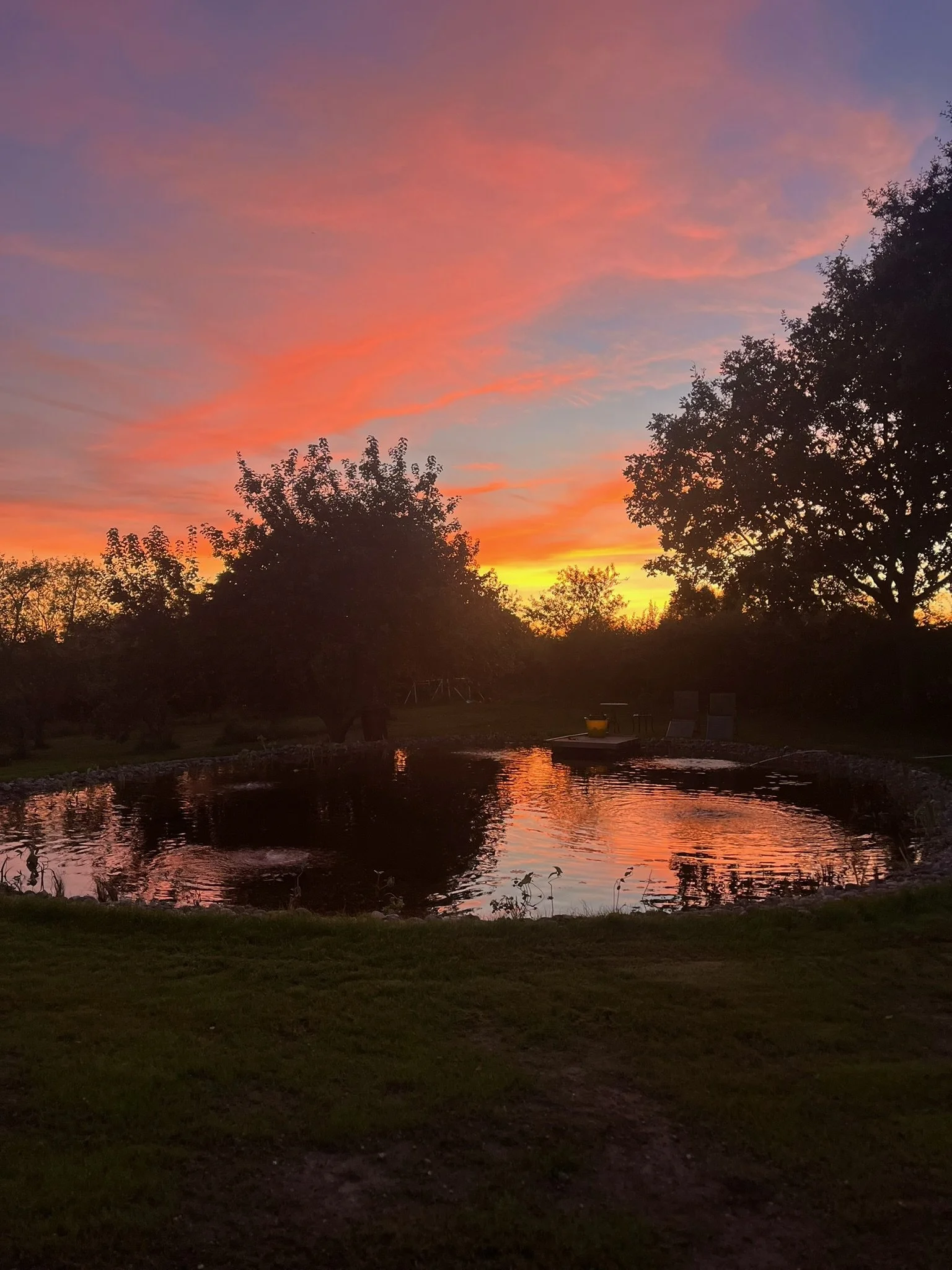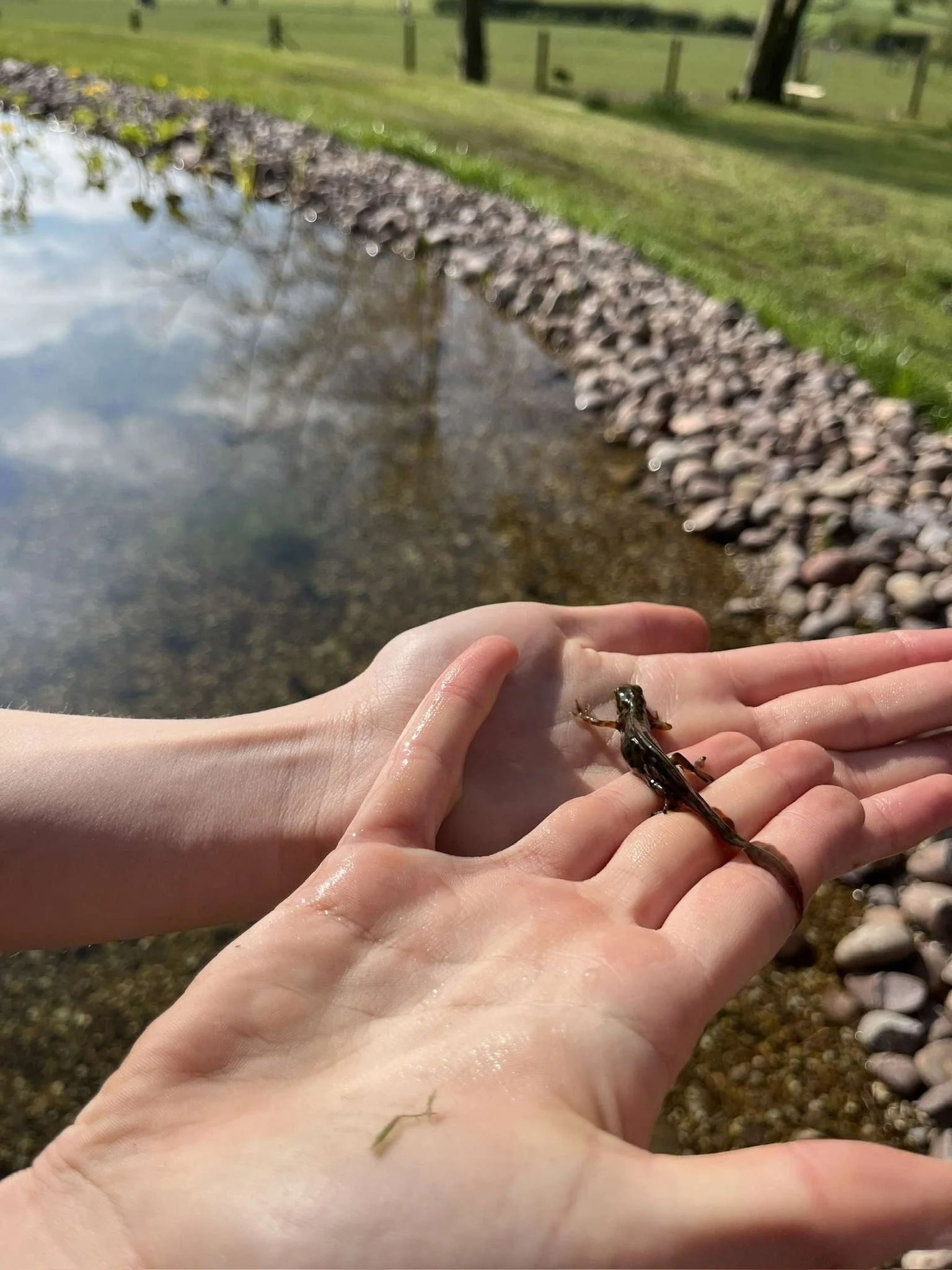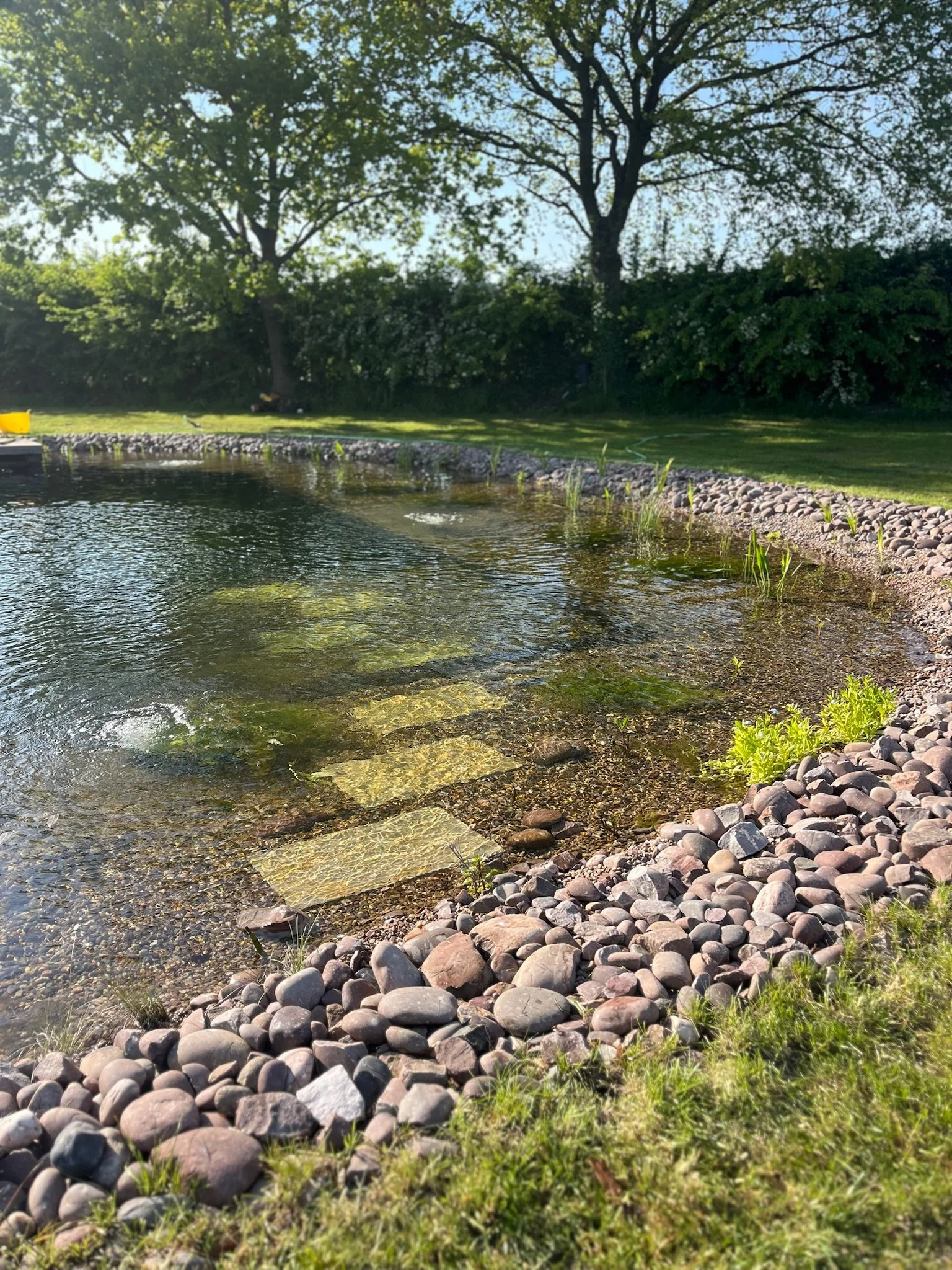
Our Natural Swimming Pools
Find out more about our natural swimming pool system and how our pools work
A Closer Look at our Eco-Friendly System
Natural swimming pools offer a sustainable and chemical-free alternative to traditional chlorinated pools. Designed to work in harmony with nature, these pools maintain crystal-clear water through biological processes rather than artificial additives. Here’s how the system works:
Natural Filtration with Plants and Microorganisms
At the core of the system is the division of the pool into two main zones:
Swimming zone: Where people swim
Regeneration zone: A shallow area planted with aquatic vegetation
The regeneration zone is key—it acts as a living filter. Plants and the microorganisms living around their roots absorb nutrients and help break down impurities in the water. This keeps the pool clean naturally, without the need for chemicals like chlorine.
Gentle Circulation Using Airlift Technology
Instead of traditional electric pumps, many systems use a low-energy airlift circulation method. This involves bubbling air through the water to gently push it through the filtration zone. Not only is this more energy-efficient, but it also helps oxygenate the water, which supports beneficial aerobic bacteria. These bacteria are essential for breaking down organic matter and keeping the water clear and healthy.
Creating a Balanced Ecosystem
A major strength of this approach is its ability to foster biodiversity. The regeneration zone provides habitat for a range of beneficial wildlife, including insects and amphibians. This biodiversity helps regulate algae and pests, maintaining a natural balance that contributes to the pool’s cleanliness and health.
Sustainable and Aesthetic Design
These pools are often designed to complement the surrounding landscape. Common features include:
Rainwater harvesting to top up the pool
Natural materials like gravel and stone
Organic shapes that blend seamlessly with garden environments
This creates not just a swimming area, but a beautiful, tranquil feature that enhances the overall ecosystem of your outdoor space.
Benefits at a Glance
Healthier Swimming: No chlorine or harsh chemicals—ideal for sensitive skin and eyes
Lower Maintenance: Natural filtration reduces the need for constant water testing and chemical adjustment
Eco-Friendly: Low energy use, promotes biodiversity, and supports local wildlife
Naturally Beautiful: A living, breathing landscape element that evolves with the seasons
Whether you're building a backyard retreat or a public wellness facility, natural swimming pools offer a sustainable, serene, and health-conscious solution to traditional pool design.
Why Simpler Natural Pool Systems Are Often Better Than High-Tech Alternatives
Natural swimming pools that rely on plants, gravel, and gentle circulation rather than complex technology offer several key advantages. While more complicated systems with UV filters, mechanical pumps, and advanced sensors can maintain clean water, they often miss the core benefits that make natural swimming pools truly sustainable and enriching.
1. Closer to True Ecological Balance
Simpler System: Our system uses natural processes such as plants, beneficial bacteria, and oxygenation to purify water. These systems mimic the self-regulating dynamics of natural wetlands and ponds.
High-Tech Systems: While effective, they often override or bypass natural biological processes, creating a pool that looks natural but functions more like a conventional chlorinated system behind the scenes.
Why It Matters: A balanced ecosystem is more resilient, self-maintaining, and beneficial to surrounding wildlife. You're creating a living water body, not just simulating one.
2. Fewer Components = Less Maintenance
Simpler System: With no UV bulbs to replace, fewer pumps, and minimal moving parts, there's less to go wrong. Maintenance mainly involves occasional trimming of plants and removing debris.
High-Tech Systems: Require ongoing monitoring of equipment, replacement parts, and sometimes even professional servicing.
Why It Matters: A simpler system is more cost-effective over the long term and easier for homeowners to manage themselves.
3. Energy Efficiency
Simpler System: Powered by low-energy airlift pumps and, if desired, solar systems. Water is moved gently and efficiently, promoting a natural rhythm in the pool.
High-Tech Systems: UV sterilisers and multiple circulation pumps can consume significantly more energy.
Why It Matters: Lower energy use reduces your environmental footprint and your utility bills.
4. Supports More Biodiversity
Simpler System: This encourages a biodiverse environment, as frogs, newts, dragonflies, birds, and pollinators are drawn to the pool, enhancing the garden’s ecological value.
High-Tech Systems: Can sterilise water too aggressively, limiting the diversity of beneficial organisms and creating a sterile environment.
Why It Matters: Biodiversity isn’t just beautiful—it’s a key part of long-term water quality and garden health.
5. Philosophically Aligned with Sustainability
Simpler System: Aligns with permaculture and ecological design principles. It treats water as a living system, not a chemical or mechanical problem to solve.
High-Tech Systems: May reduce some risks or offer faster clarity, but often come with a higher environmental cost and depend on ongoing inputs (spare parts, energy, etc.).
Why It Matters: Many people choose natural pools to live in greater harmony with the earth. A low-tech, low-impact system is more consistent with that goal.
Final Thought
High-tech methods can be useful in certain contexts, especially where rapid water turnover or specific hygiene standards are needed (like public pools). But for a private home or a wellness retreat aiming for a serene, chemical-free, ecologically vibrant swimming experience, the simpler, plant-based system isn’t just “good enough” - it’s better.








